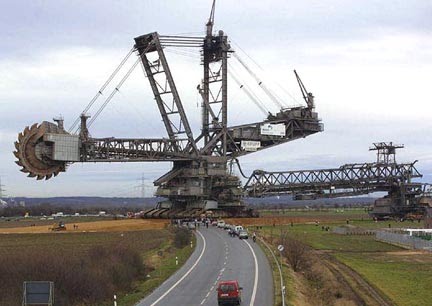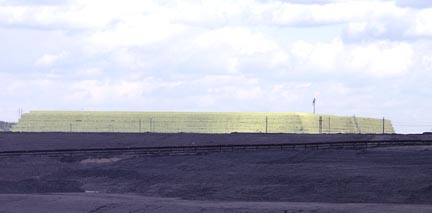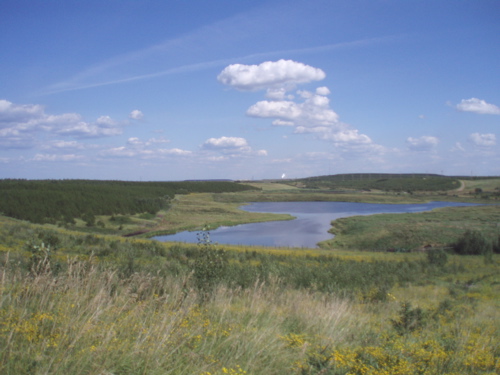Avatar Movie Reviews
Avatar – Movie Review
Story wise there isn’t much that’s the whole story and you can predict how it turns out if you’ve watched more then a handful of movies (guy bonds with Na’vi, doesn’t want their land to be moved out and conflict starts etc.). From this standpoint as well as including a seemingly pointless back-story at the beginning and video blogs as weak plot devices you could say it was pretty underwhelming.
The reason Avatar has captured many audiences and critics alike, it’s one 3D extravaganza. It may be too long and not at all original but they sure flexed their financial muscle on this one. At times it felt like a boner showoff as some scenes had no explicit point other then to say – “look at what we can do”. Still that’s beside the point, it’s still excellent from this aspect and it’s hard to argue that. I actually expect quite a few awards to come out of this movie due to the fantastic imagery and extensive 3-D work.
All said and done, this is NOT the movie of the year. It’s a good movie, okay story line, great action and even better graphics. It still wasn’t very memorable movie wise. It doesn’t come close to the Gladiators or the Slumdog Millionaires.
Avatar movie review
Category: Creative commons • DesiPundit
Posted on: December 28, 2009 8:40 AM, by Selva
Posted on: December 28, 2009 8:40 AM, by Selva
First the name. Avatar--if you play computer games, you may know this very well--is a character you use inside an unreal world. The word Avatar has its origins in Indian mythology. An Avatar (ava-tara in Sanskrit) is god's visit to earth to fix something that is broken. Vishnu, one of the three gods who protects creation, by necessity visits earth often. Vishnu, the puranas declare, is dark-blue in color (the original story teller was inspired by blue oceans, blue sky?). To go with the name Avatar, Cameron has also decided to paint the aliens blue, possibly inspired by Hindu mythology. The name and color out of the way, let's talk about the movie.
Set in future on an alien moon called Pandora, Avatar movie tells the timeless story of greed, immaturity and the violence that arises out of ignorance. Here I refer to the fundamental ignorance: the ignorance of not knowing one's place in the scheme of things. Would we as a species find a way to survive our inner demons or would our demons consume us?The story revolves around a soldier who goes to Pandora to help The Corporation that wants to mine and export oil (ok, it's called unobtainium). The Na'vi are the alien arboreal humonoid civilization that thrives on the planet. They are part of a vast symbiotic living system that includes plants and animals which are all connected by an intricate biological communication network. The Corporation wants to mine the moon and the Na'vi fight for their homeland. A paraplegic soldier sent to participate in a scientific experiment + diplomacy mission falls in love with a Na'vi woman and the rest is predictable. Along the way, we are introduced to Avatars. Avatars are biological creations made from human and alien DNA. They are not self-aware and are controlled by a human (from whose DNA it was made). The soldier controls an avatar that is made from his DNA (his brother's actually).
Cameron a skillful film-maker. Avatar breaks new ground. The alien world Cameron and his team present us is one of the most thought-out and consistent I have seen in movies. The movie succeeds in air-dropping us into Pandora and making us identify with the Na'vi exceedingly well. As audience, we seamlessly cross the species boundary and root for the aliens to succeed against the childish arrogant pricks called humans.
The science behind the movie has it's pitfalls--for instance, how does the communication with the Avatar work while all other comm equipment fail in the vortex--, however, much of the alien world is credible and beautifully rendered in glorious 3D. It's is also refreshing to see the 3D presented in an understated manner instead of in-your-face manner.
Last comment: Art that is painted on a big canvass has its perils, especially for the artist. A movie like Avatar is a comprehensive expression of the director's mind. It highlights both the refinement and the rough edges of the artist's vision. This is true of Avatar. Avatar is a idealistic movie (some may say, children's movie and there is truth in it) that aspires for an ideal world where there is no exploitation and humans are an enlightened bunch. Fortunately, the movie's moral premise plays second fiddle to the technical feats.
I enjoyed the movie. The ending is especially poignant. The visual effects are spectacular and a lot of the production techniques are a first in the craft of movie making. For that alone, the movie is a must see.
-----
Cameron's interview in Studio 360. He explains the floating mountains in this interview, if you have been wondering.
WIRED had a feature some weeks back. Good read if you are interested in the technical aspects of the film-making.
The Avatar Movie and the Mining of Oil Sands
Posted by Heading Out on January 17, 2010 - 10:53am
Topic: Supply/Production
Tags: canadian oil sands, oil production, tech talk [list all tags]
Topic: Supply/Production
Tags: canadian oil sands, oil production, tech talk [list all tags]
This is one of a series of Sunday tech talks.
The movie Avatar gets the mining bit wrong. And not by just a little – but then us villains are rarely understood, so what should we expect? OK so what is a popular, nay perhaps even genre changing movie got to do with technical talks about fossil fuel production? Well, fairly early in the movie it is made clear that the sole purpose for the plot is to mine “unobtainium” which is a mineral with all sorts of value. Now I’m not going to give away much of what goes on in this movie (and I agree with most of that review by the way) but the fallacy over how they mine the deposits on the planet is one of the lessons learned from the mining of the oil sands in Alberta, which is actually what I want to discuss a little today. In the movie they use a variation on a bucket wheel excavator – which in today’s world looks like this:

Bucket wheel excavator on the move
The movie Avatar gets the mining bit wrong. And not by just a little – but then us villains are rarely understood, so what should we expect? OK so what is a popular, nay perhaps even genre changing movie got to do with technical talks about fossil fuel production? Well, fairly early in the movie it is made clear that the sole purpose for the plot is to mine “unobtainium” which is a mineral with all sorts of value. Now I’m not going to give away much of what goes on in this movie (and I agree with most of that review by the way) but the fallacy over how they mine the deposits on the planet is one of the lessons learned from the mining of the oil sands in Alberta, which is actually what I want to discuss a little today. In the movie they use a variation on a bucket wheel excavator – which in today’s world looks like this:

Bucket wheel excavators were, at one time, used for mining up at Fort McMurray where the large oil sand deposits are found in Northern Alberta. However the reason that they were discontinued (and which formed part of the plot of the book “Athabasca” by Alistair MacLean) is that they are the single machine whose health totally controls production. When they are working the mine is producing, and when they aren’t it isn’t. (The plot of the movie was to disable the machine and thus stop oil production - possible where there was only one machine.)
The problem that really developed was that maintenance and repair of such a behemoth is such that it is more reliable and productive to rely on a multitude of smaller machines, with truck haulage, rather than the single large machine with conveyors. As the mines have learned these lessons they have pensioned off or sold most of those they had. Now, if some of the shovels have maintenance problems, with some dozen or more working at one time, then the drop in production is not nearly that significant. You can see one of the problems in this picture of the teeth on the buckets. (Since this is the one on display, I suspect that towards the end replacements weren't as frequent, but you can see how many teeth were missing, and these take significant time (and money) to replace).

Note the broken and missing teeth on the front of the buckets. (The bright spots are hardened buttons to reduce side wear on the buckets as they cut through the abrasive sand.) I first wrote about the oil sands back in June of 2006 and back then, the production was just over a million barrels of crude a day. When Gail Tverberg wrote about her visit up there on The Oil Drum last August (Part 1 and Part 2), she noted that in 2008 production had risen to 1.2 mbd and that with current construction projects this would increase to 1.94 mbd. The current Alberta Provincial web site expects that these projects will raise production to 3 mbd by 2018--which is down a bit from earlier projections.
There is some controversy that exists with regard to crude production from these mines, and the area in general. There are basically three different processes that are currently being used for oil extraction, and it is only the first of these – the mining and processing of the sand, that I will discuss today. The use of steam to recover oil from underground wells (Steam Assisted Gravity Drainage – SAGD) and the partial combustion of some of the oil to recover some of the remainder (a process called THAI for Toe to Heel Air Injection) will be written about in subsequent posts.
Part of the reason that the topic is controversial is due to the need for natural gas to create the steam used in the SAGD process, but there are other concerns that have arisen because the sand does contain some natural gas that can be drawn off and sold commercially. Last October, the Energy Resources Conservation Board ruled that 158 wells that were producing natural gas from the sand should be shut-in (that means closed) since gas production from them might interfere with the SAGD process. In particular the drop in pressure as the gas is removed may negatively impact subsequent SAGD production. A hearing on this will be held early this year. It is also a target for additional taxes and regulations in order to “green” the industry.
So what is there to green? Let me run through the process. The oil sand lies below a relatively thin cover of vegetation, soil and rock, which is first removed and stockpiled so that it can be replaced, after mining is completed. Once that has been done (using the same large shovels and trucks that are used for mining the sand), the sand is mined using large shovels that can load a truck with 100 tons of material at a time.

Loading the truck, it will take 2 to 4 shovel loads to fill the truck bed, depending on its size In the summer, when the temperatures are higher, the sand is easier to move, and thus dozers can be used to push down the material into the arc of the shovel, so that it does not have to reposition itself that often, and production from higher benches can be kept up.

Dozer loading shovel The trucks are used to carry the material to the initial processing plant. The sand is abrasive as well as being heavy, so that there is considerable wear on not only the teeth of the shovel, but also on the tires (my head is about the height of the axle) and on the beds of the trucks so that these have to be periodically replaced.

Relining the bed of a truck The trucks are used to carry the mined material to a central processing plant within the pit, and it is first dumped into a primary breaker.

Tipping into the breaker The oil sand is relatively soft, but contains layers of rock that have little oil in them. These rocks are generally harder, so that they survive the crushing - which also means that they are bigger, and can be separated out and removed from the system, before the oil sand passes into a mixing tank. In the mixing tank, the oil sand is mixed with hot water and agitated, which breaks it down into particles, since the individual sand grains are coated with a thin layer of water, under the intervening oil that ties it all together.

Mixing the sand with water The resulting slurry is then passed to a pump station, that pushes the slurry through a pipeline, which carries it to the initial separator at the refinery.

Pump station and delivery pipeline The pipe is about a mile long, and in the time that the sand passes through it the oil and sand are separated. At the beginning of the refinery, the slurry is then pumped into a large tank. Simplistically the sand settles to the bottom of the tank, the water lies in the middle (where it can be drawn off for re-use) and the oil floats on the top and can be drawn off to feed into the refinery.

Initial sand:oil separator The heavy crude is treated in this initial refinery so that the resulting liquid can be sent as a sweet crude down to other refineries further south.

Upgrading refinery Making sweet crude requires, among other things, removing the sulfur from the oil. Sometimes sulfur can be marketed, but sometimes it must be stock-piled. Because of the stockpiling, there are the start of "sulfur pyramids" being constructed around the refinery.

Start of a sulfur pyramid Once the oil sand has been removed down to the underlying bed rock, the sand can be replaced and the land reclaimed. Gail did a tour of some of the sites, and has posted pictures - unfortunately I did not have have that opportunity.
However, given the comments that this post has given rise to let me add one of those pictures to this post:

Reclaimed, but not yet approved land
As usual this has been an abbreviated explanation of a process. Comments and questions might indicate where I need to explain things in more detail.
The problem that really developed was that maintenance and repair of such a behemoth is such that it is more reliable and productive to rely on a multitude of smaller machines, with truck haulage, rather than the single large machine with conveyors. As the mines have learned these lessons they have pensioned off or sold most of those they had. Now, if some of the shovels have maintenance problems, with some dozen or more working at one time, then the drop in production is not nearly that significant. You can see one of the problems in this picture of the teeth on the buckets. (Since this is the one on display, I suspect that towards the end replacements weren't as frequent, but you can see how many teeth were missing, and these take significant time (and money) to replace).

There is some controversy that exists with regard to crude production from these mines, and the area in general. There are basically three different processes that are currently being used for oil extraction, and it is only the first of these – the mining and processing of the sand, that I will discuss today. The use of steam to recover oil from underground wells (Steam Assisted Gravity Drainage – SAGD) and the partial combustion of some of the oil to recover some of the remainder (a process called THAI for Toe to Heel Air Injection) will be written about in subsequent posts.
Part of the reason that the topic is controversial is due to the need for natural gas to create the steam used in the SAGD process, but there are other concerns that have arisen because the sand does contain some natural gas that can be drawn off and sold commercially. Last October, the Energy Resources Conservation Board ruled that 158 wells that were producing natural gas from the sand should be shut-in (that means closed) since gas production from them might interfere with the SAGD process. In particular the drop in pressure as the gas is removed may negatively impact subsequent SAGD production. A hearing on this will be held early this year. It is also a target for additional taxes and regulations in order to “green” the industry.
So what is there to green? Let me run through the process. The oil sand lies below a relatively thin cover of vegetation, soil and rock, which is first removed and stockpiled so that it can be replaced, after mining is completed. Once that has been done (using the same large shovels and trucks that are used for mining the sand), the sand is mined using large shovels that can load a truck with 100 tons of material at a time.









However, given the comments that this post has given rise to let me add one of those pictures to this post:

As usual this has been an abbreviated explanation of a process. Comments and questions might indicate where I need to explain things in more detail.



![Avatar [Blu-ray]](http://ws.amazon.com/widgets/q?MarketPlace=US&ServiceVersion=20070822&ID=AsinImage&WS=1&Format=_SL160_&ASIN=B002VPE1B6&tag=intermarkes02-20)